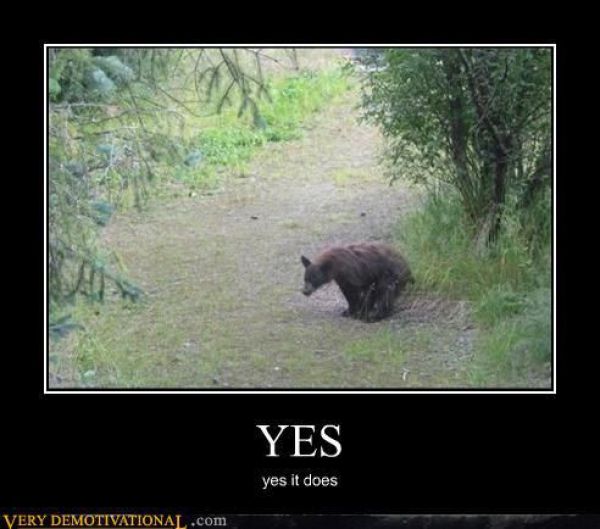Training The Obese Client: Part One
Let’s imagine for a second you’re a new trainer. You’re eager, excited, a little naive (okay, a LOT naive) about what it’s going to take to become a successful trainer. I mean, how hard can it be?? You clock in at 10, leave at 5, train yourself beforehand, and do a few programs over your lunch break, right?
Ummmm. No
Most new trainers think that they won’t have to ever work with a smelly client, or hear a client whine about how hard you’re working them, or go through any periods where their clients aren’t coming back in for a few weeks and their income tanks faster than the XFL. While their intentions are good, their methods may not be all that great. Most come into their careers knowing one way of training. That being, how they train themselves. While their history of body-building training may have made their bicepticals all jacked up and their chesticles hang nicely from their sternums (Note: these aren’t actual body parts, I’m just being an anatomy gangsta), it probably won’t do the same for the amateur hockey players or for the guys with low back pain, and especially for those who are morbidly obese.

This weekend I started teaching a new class for new trainers looking to get certified to make people sweat and not kill them, and wanted to share a little thought process on what it takes to train a client who may be 50, 100 or more pounds overweight, because what you can do as a “normal-sized” person, they can’t do without shitting out a kidney or two. On top of that, I recently got my hands on BodyByBoyle online, which happens to be loaded with a swack-load of free videos and presentations and fun stuff like that from Mike Boyle and the gang, one of which was a presentation on training the obese client (Note: If you haven’t looked at this yet and you’re a serious fitness professional, give your head a shake, and click on this link to get it. It will pay for itself the instant you open it up and see what’s inside). While Mike has his specific methods in this regard, I understand where he’s coming from when he says he’s not an expert at training obesity. The guy has spent the past 30 years working on the opposite end of the training continuum, working with some of the best athletes in the world and making them better. My business is devoted primarily to clients with medical concerns, injuries, and metabolic dysfunctions relating to obesity and inactivity, so my take is going to be completely different from his, not to say better or worse, just two different takes from two different experiences.
Before You Start:
Clients who are obese will also typically carry a bit of baggage with them, in the form of other diseases and conditions. Let’s say they have a touch of the diabetes, some hypertension, a wonky knee from all the weight pressing down on it, and a skiff of gout thrown in for added measure. This will add to the difficulty of designing a training program. On top of that, they’re essentially wearing a heavy weighted vest, all the time, which will make even the most basic exercise difficult. Their balance will be affected, their mobility and flexibility will be affected, and their tolerance for an exercise will be affected. Will they have difficulty walking after their workouts if they’re too difficult? Um…..Does a bear…..

So starting to train these clients will mean beginning very slowly, and working on getting the body moving in conjunction with setting the stage for a reasonable diet. Don’t be fooled, the diet will be the first objective, and the exercise program will be secondary, since dietary changes will always result in more weight loss than the addition of any exercise, and the two combined will result in more weight loss. This isn’t just opinion, it’s been proven by science-speaking articles and such.
Step One: Mindset
Every overweight person who walks into a gym is scared shitless to be there. Their number one comment that I always hear is that they don’t want everyone looking at them and judging them for being there. Making them do ridiculously hard exercises that don’t take into account their limitations will only make them more afraid to be there, make them feel like a failure and make them not want to come back. If you want to see what not to do to an overweight client, just watch an episode of the Biggest Loser. I’ll admit, while they get results for their ahem, clients (I think slaves would be a better term, because these people are isolated, and they have no option of giving up without a lawsuit on their hands), they also don’t have to worry about that client leaving and never coming back. The captive audience is there for good, and whats more, they’re getting paid to be there. While having someone who’s clocking in at 400 pounds sprint across a field and sprain their knee may make for good television, especially when the harpie trainer says “you’re so weak your leg couldn’t hold you up while you ran as hard as you could over rough terrain!!”, it isn’t something trainers should look at as the “Gold Standard” by any means.
Confidence is key to training overweight clients. They need to feel like they not only can do it, but that it will lead to them succeeding in their weight loss goal. Taking a new client through a dry-run of “Fran” from the CrossFit geniuses will only make that person blow out their left nut and make them have a quick trip to the hospital, not to mention cancelling their training with you and probably finding a shyster (sorry, lawyer) to take your house for your troubles.
They are not athletes. A lot of the highly sexy exercises you see at conferences or on GSP’s training program will not work with them, so don’t even try, because it will only end in disaster. That doesn’t mean they won’t eventually be able to move on to higher intensities and cooler exercises, but when they start, go low and slow, baby. I’d rather have a client say after their first workout “I was a little sore after that one, but it was only mild and went away after I got up and started moving around,” than “Oh……my……GOD!!!!! What the hell did you do to me?? I had to take three tries to get out of bed! I fell in trying to take a poop!! Then I couldn’t get back up because my ass was too sore!!”
These people have failed before, and they don’t want to keep failing. They have probably yo-yo dieted for years, and have seen little to no success, which means they are less than ambitious about success with your training, so setting them up for failure from the beginning will only reinforce this thought process and lose them forever. I’ve failed before at a lot of things, and it sucks. It makes you not want to keep trying, and to just give up on whatever you’re trying to do. Some people do give up, and they resign themselves to the consequences. Just like anyone, finding success and a method of easing exercise and good eating habits into their current lifestyle will make them feel confident that this will work, and that you actually care about their success by working with them on all levels.
Also, the ability to maintain balance is less than optimal, so falls can occur quite easily. Using balance devices like bosu’s, stability balls and wobble boards should be limited to conversations such as:
“Hey, what’s that thing?”
It’s a Bosu ball. It’s kind of like ‘Inception,’ just a bad dream. Now keep squatting.”

By avoiding the use of such devices, you can effectively remove one more fear and one more method where the benefit is minimal and the costs may be high. Training on stable ground with safeties set up to assist if the person loses their balance, as well as having a place to sit and rest after a set will be of utmost importance to help them feel comfortable and to get more enjoyment out of their workouts.
Step Two: Basic Nutrition has to be Basic
Overweight clients have two major problems facing them: Too much food and not enough expenditure. I don’t care who you are, genetics aren’t a factor. Sue me. I haven’t met a client yet who could factor in genetics as the reason they were obese, especially when you look at their diets, lifestyle and activity level. Most people who claim genetics do so because their parents and siblings are obese, and their grandparents and aunts and uncles are obese. Let’s look closer: Are they obese because of their genetics, or because their families all eat 10,000 calories for dinner, salt the hell out of their food before tasting it, and have their favorite ass-grooves in the couch? Show me the dominant or partially dominant FTO variant phenotype (the so-called obesity gene) which is activated in their DNA, and then I’ll believe their genes have something to do with it.
Because obese clients have no idea about food (that’s why they’re obese in the first place), they need to have basic knowledge of how to eat. A great quote from Michael Pollan’s book Food Rules: An Eater’s Manual, can sum up how to eat in seven simple words: “Eat food. Not too much. Mostly plants.”
That’s it.
Stop eating processed crap with any hint of high fructose corn syrup in it. Stop eating all the sugary sweets, and stop drinking calories. Cut back on fatty meats, and if necessary you could probably cut them out entirely. I’m sure a lot of body builders out there will argue that protein is needed in copious amounts, but I’d argue that one in a heartbeat, and I’m sure your colon would too!! Ever smell a bathroom after a bodybuilder has finished using it?? Not good. I’m 240 pounds, getting stronger by the day, and keep my protein to around 80 grams each day, with only a protein bar on days when I forget to pack a big lunch. The people who sell protein powders are the ones who keep saying you need more protein, but there’s no real convincing research out there that’s convinced me it’s better to have a high-protein diet for anyone, regardless of their activities. After all of this, keep your portions under control.
I’m sure this isn’t news to anyone. Everyone knows that quarter pounder they’re about to scarf down isn’t going to be on any diet plan this coming year, but people still reach for it. We know that fruits and veggies are the best kinds of foods, but we still leave them on our plates at the end of the meal instead of eating them first. Talking nutrition is easy. Doing nutrition is hard, but not impossible. It’s as simple as outlined above, but harder than giving up crack to someone who is overweight. The biggest challenge is just simply putting it into action. Some of the foods mentioned above in the bad category have addictive properties that makes giving them up tough. Plus, in a world where instant gratification is becoming more and more the norm, you don’t get the same endorphin release from a carrot that you would from a DoubleDown (which thankfully was pulled off the market!!! HALLELUJAH!!!).
Part Two will outline the types of exercises, program design components and the Do’s and Don’ts of training the obese client. FUN!!!
6 Responses to Training The Obese Client: Part One